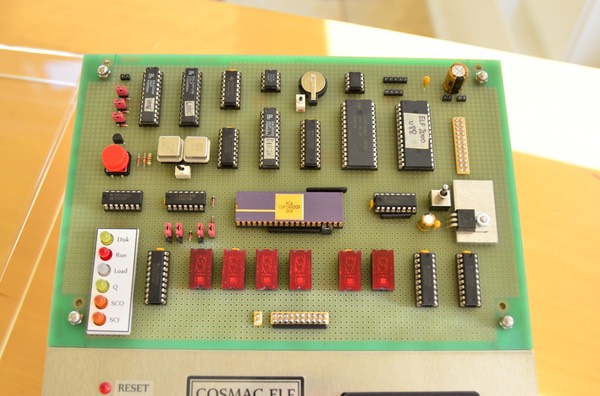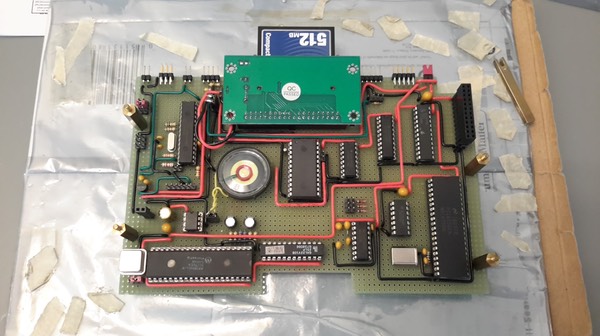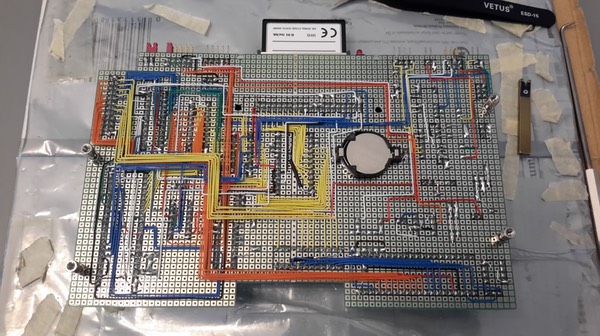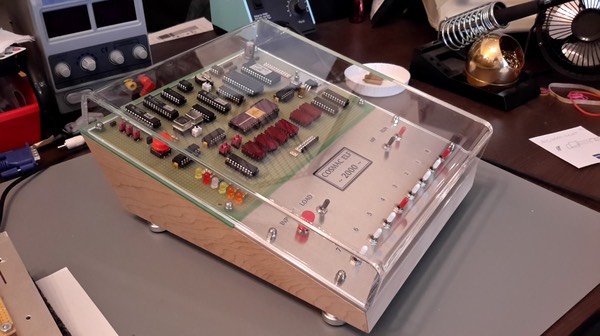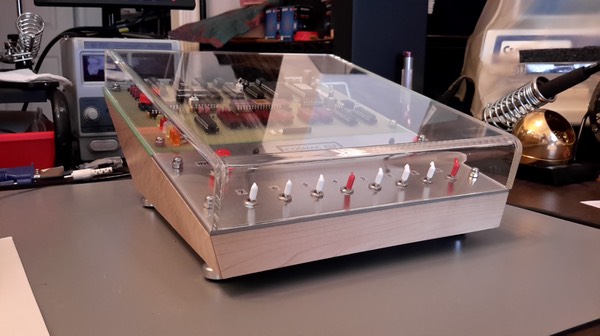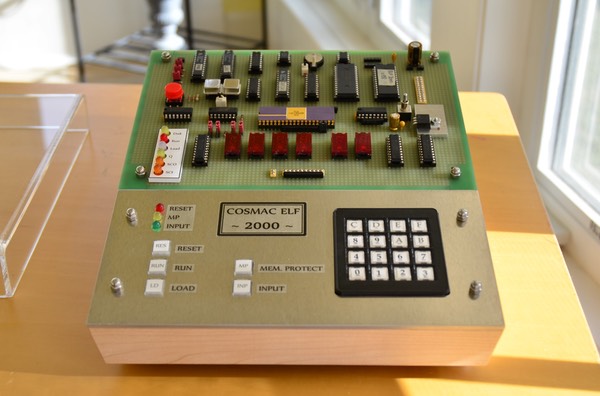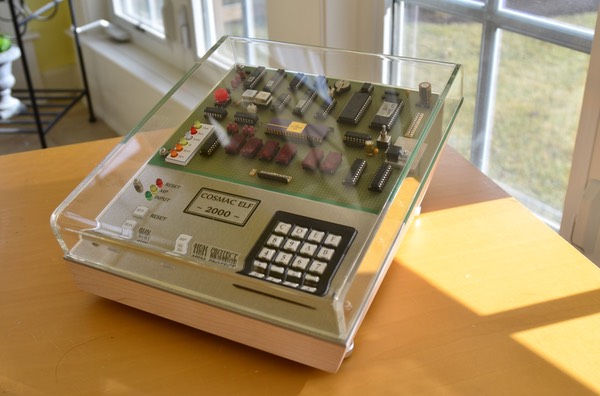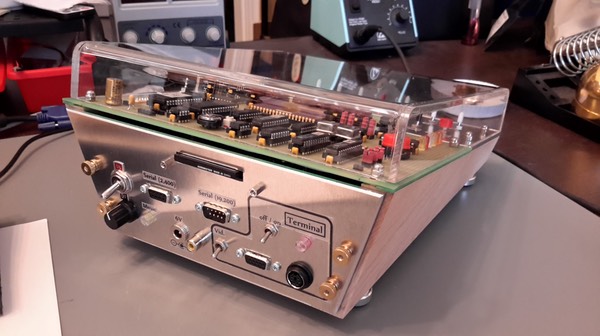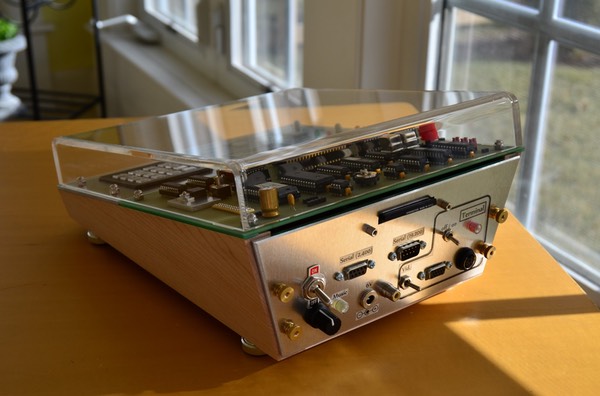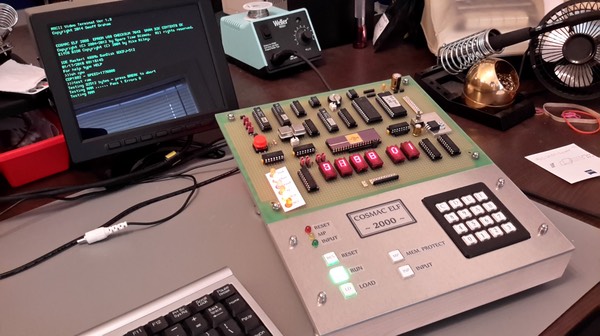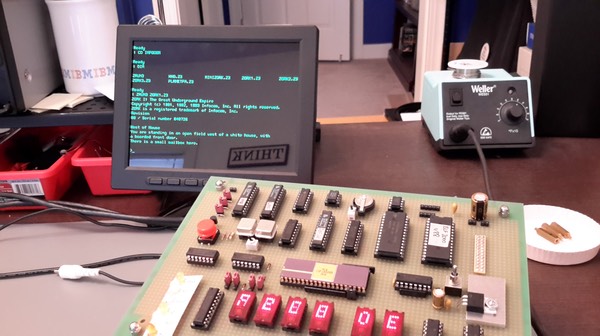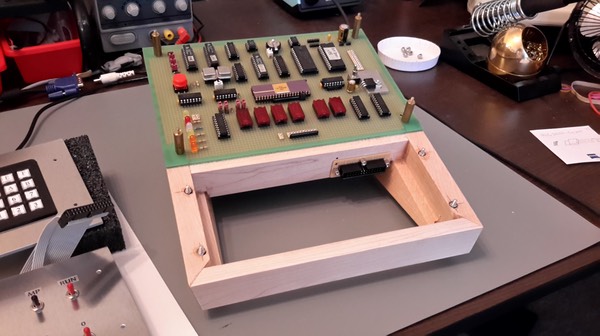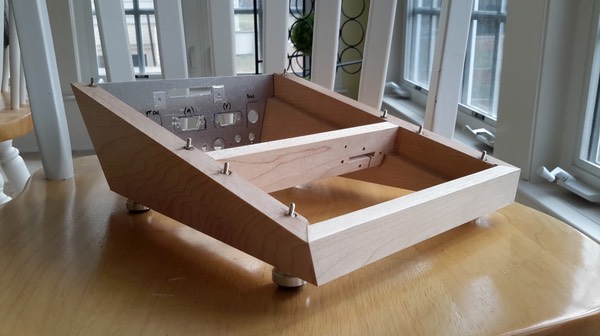Forum member Lok contributed these photos of a beautiful and meticulously handcrafted build of an ELF 2000. Here’s the story of this machine as Lok tells it:
In recent years, I have become very interested in the origins of computing. I discovered the original ELF design from 1976, which was just plans published in Popular Electronics magazine! I was drawn to the switch-based input of this and other early machines. I looked more online, and was surprised to see some people still working on these types of machines, even today. I found the Spare Time Gizmos ELF 2000, designed by Bob Armstrong, which looked great to me as it was based on the original ELF design, but was modernized. Unfortunately, the boards had all been sold.
I went to the designer's website, and found the excellent ELF 2000 manual/schematics/firmware that were available. So I embarked on wiring one up manually!
The original design consists of a main board and various accessory boards which could be plugged in. I decided I wanted the functionality of the main ELF 2000 board (with the expanded display, larger RAM, and a boot ROM), CDP1861 PIXIE graphics, CF card storage with ElfOS, fast serial connection, and real-time clock with battery backup. Additionally, I wanted it as "stand-alone" as possible, so I added an on-board microcontroller-based terminal emulator (designed by Geoff Graham), which connects a full keyboard and monitor directly with the ELF 2000. I later added Bob's design for an ELF music circuit, which is capable of playing 3-voice music converted from MIDI files.
I designed my ELF 2000 to be a main board, and a slightly smaller accessory board which sits underneath. The main board contains the ELF 2000 circuitry and the PIXIE video circuitry. All other functions (CF card, serial, RTC, music, and terminal) are on the accessory board. I also built the traditional ELF switch input panel, and a HEX keyboard input panel, which are interchangeable.
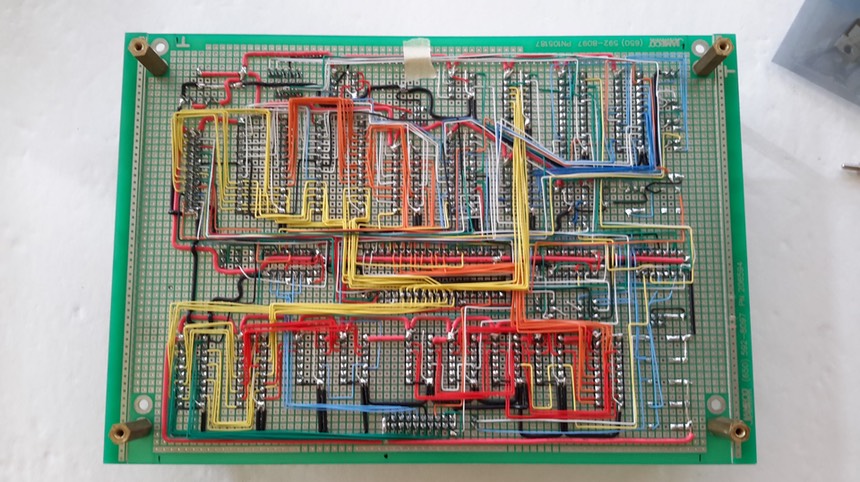
The build went very well, with the help of people from the COSMAC ELF group. I ended up adding an oscillator speed switch so one could switch from standard speed (1.79MHz) and "turbo" speed (4MHz). The regular speed is needed for PIXIE video timing. The 4MHz speed was the upper limit for my CDP1802CD processor, and makes using the other functions faster, especially useful when using the operating system.
The enclosure I designed for it was built out of maple, and was an adventure by itself.
The final ELF runs well. It can run original ELF programs via the switch panel or HEX keyboard. One can control the ELF directly with a PS/2 keyboard and VGA monitor. It can interface to a computer terminal with a serial cable and control the ELF and upload/execute programs. It can boot into ElfOS and store programs on the CF card. It can run ZRUN, which is an Infocom emulator which runs many of the Infocom adventures (Zork, etc). It can load up music and play it on the internal speaker with volume control on the back. It keeps the date and time on the battery-backed clock/calendar. RAM also has a battery backup.
In all, it's my dream ELF system! It's a very modern ELF, but built the old-fashioned way. It has really helped me understand what computing was like back then, and makes me appreciate how far computers have come. Entering and manipulating programs directly in memory is a really fun and unique experience, quite different from how we use computers today.


